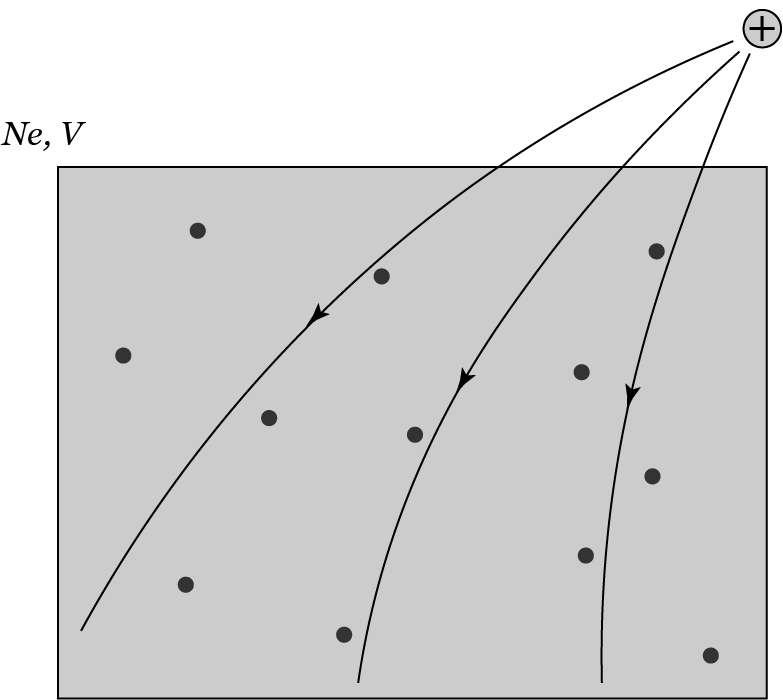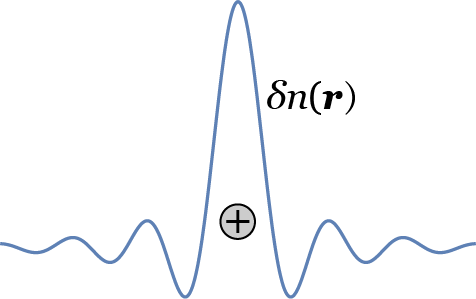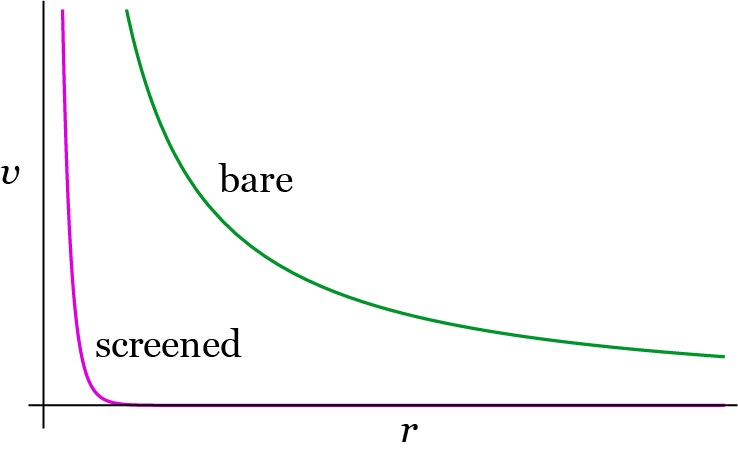Lecture 3
Today
Kohn-Sham equations
Density response and screening
Response functions
Reading
GY: 15.5--15.7.
Giuliani and Vignale. Quantum Theory of the Electron Liquids. 3.2.1 -- 3.2.7, 3.3.1 -- 3.3.5.
1. The Kohn-Sham equations
The Kohn-Sham Lagrangian
The DFT variational principle means
Note
and
where the exchange-correlation potential is defined as
is the functional derivative of the exchange-correlation energy functional with respect to density, called
Then we arrive at the Kohn-Sham equations
The only assumption up to this point is the non-interacting v-representability, which is justifiable to a great extent. Note that the eigenvalues
However, the K-S equations are useless yet, because
2. Density response
Density is the key variable, as we have demonstrated in the density functional theory.
Adding external charge/potential to a many-electron system

From the DFT, we have
Let
If we are to reach a new stable state in the external potential, we need
this means
we have introduced the static density response function (or susceptibility) as the functional inverse
The functional inverse of a two-point function
Now we calculate the susceptibility for an interacting many-electron system
Noting that w/o interaction
Putting together, we find
Now for a uniform system (like the electron gas),
Thus
Then the susceptibility is
where the polarization function
3. Screening
Screening occurs when the potential from the induced charge is superimposed on the original (external) potential.

where the (static) dielectric function is defined as
Example: Thomas-Fermi approximation. Let
Thomas-Fermi:
we define the Thomas-Fermi wavevector (托马斯-费米波矢)
Then in the T-F approximation,
what is
That is,
where
Then in the T-F approximation,
So for a point charge, the external potential it produces is
This is the screened Coulomb potential within the Thomas-Fermi approximation. As shown in the Figure below, the bare Coulomb interaction is long-ranged. But in a many-body system, the restructuring of charge in an external potential (even without considering the interactions between electrons) lead to induced charges

4. Linear response theory
How do we compute the
When we talk of some disturbance to a system, it is an external field
We will assume that the perturbation is weak, such that a perturbation theory is justified. The question we will try to answer is: how a variable of the system evolves when the perturbation is turned on at
We approach the problem using the quantum Liouville /ˌliːuːˈvɪl/ equation
We will be working in the grand canonical ensemble
In the interaction picture, the density operator is
the equation of motion (EOM 运动方程) is calculated as
This is a first-order operator equation, whose solution is formally
Again, this is a fixed-point problem. Truncating at the first iteration, we have
Now for an observable
So we obtain the retarded linear response function
so that
The correlation function describes, when a disturbance is introduced to a many-electron system by coupling to